Lab of plant protection
The overall objective of plant protection is to develop integrated pest management techniques to ensure the production of safe and healthy agricultural products. To reduce the use of toxic chemicals, emphasis has been put on the development of non-pesticide and biological control techniques/materials.
The oriental fruit fly, Bactrocera dorsalis (Hendel), is the most devastating insect pest of tropical fruits in Kao-Ping Area. It can seriously affect the productivity and quality of the economically important fruits, such as wax apple, mango, and guava. For the past 30 years, the oriental fruit fly was mainly controlled by the use of sugarcane bagasse board carrying poison baits. A specialized long-lasting trap has been developed and applied in approximately 22,000 hectares of fruit-growing areas. With high trapping efficiency and eight months of durability in the field, the improved device can reduce the pest population by 88% at the peak of infestation. The technique has proven to be effective in suppressing the population of oriental fruit fly during fruit production seasons.
Advances have been made in the development of biological control techniques. A liquid fermentation technique for mass production of the entomopathogenic fungus Metarhizium anisopliae has been developed. Trials are being conducted to assess the effects of applying M. anisopliae, Aschersonia spp., and Beauveria bassiana for the control of leafhoppers, aphids, and Asiatic palm weevil ( Rhabdoscelus lineatocollis) in the field. Growth media containing beneficial/antagonistic microorganisms such as Streptomyces spp. or Bacillus spp. are utilized to control seedling diseases of vegetable crops.
The effectiveness of biological control is generally associated with the tolerance of biological control agents to environmental stress. To enhance the tolerance of entomopathogenic fungi to UV radiation, we cloned three genes involved in melanin biosynthesis of the filamentous fungus. These genes were subsequently integrated into M. anisopliae and B. bassiana via Agrobacterium-mediated transformation. Experimental results showed that the melanin biosynthesis genes function well in the transformative strain ofM. anisopliae, leading to an increase in the survival rate of the transformants by more than 45% after UV exposure.
Research has also focused on the control of seedling diseases of vegetable crops. A biological growth medium comprising Streptomyces spp. and adjuvants was successfully developed. With the new medium, the incidence of damping-off in vegetable seedlings was significantly reduced to a rate of less than 10%. Since such beneficial effects on disease management were seen for not only vegetables but also other crops, it is expected that widespread application of this growth medium will lower the usage of chemical control agents.
In addition, the bacterial wilt, a worldwide disease for solanaceous crops, can be controlled by biological control measures developed by the Station. Strains of Bacillus amyloliguefaciens cultivated in a specific medium significantly reduced the incidence of the bacterial wilt to 60-70%. Since the technique not only works for solanaceous crops but also other crops, the widespread application of this beneficial bacterium will protect a wide range of crops from bacterial wilt disease.
We have assisted more than 396 agricultural production-marketing groups to establish “Good Agricultural Practices” (GAP). To ensure the production of safe and healthy agricultural products, pesticide safety training and pesticide residue monitoring have long been emphasized. To facilitate the development of tropical agriculture in Kao-Ping Area, we compile a series of pest control manuals for regional crops. We also offer diagnosis and consultation service, helping farmers to conduct effective control practices based on rapid and accurate identification of pathogens and insect pests. For a range of key pathogens and insect pests of economically important crops, periodic monitoring and forecasting are performed in order to better understand and manage the epidemics. Pest alerts and pest control recommendations are issued in a timely manner to urge the implementation of precautionary measures. The pest warning system has significantly reduced crop losses caused by diseases and insect pests.
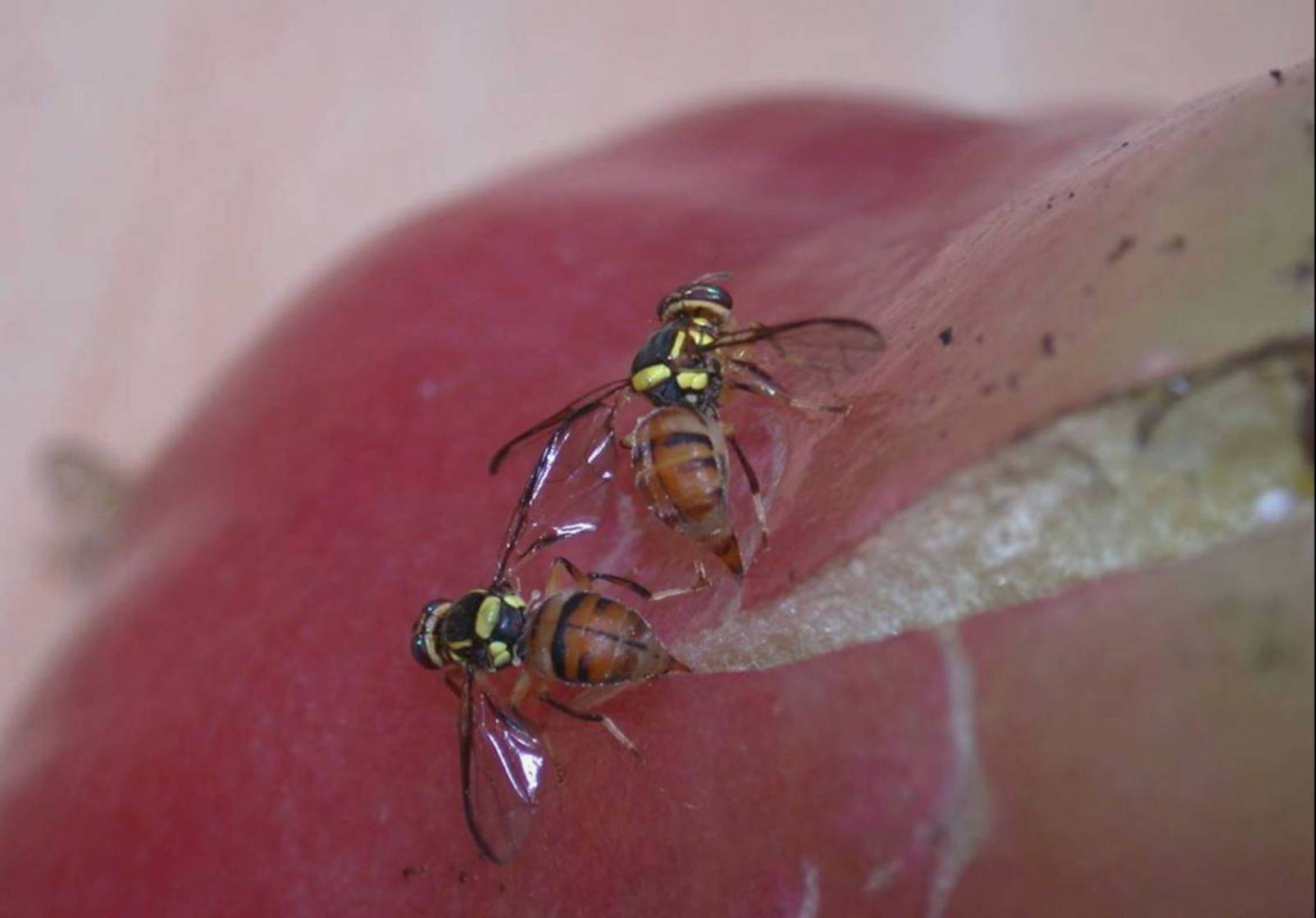
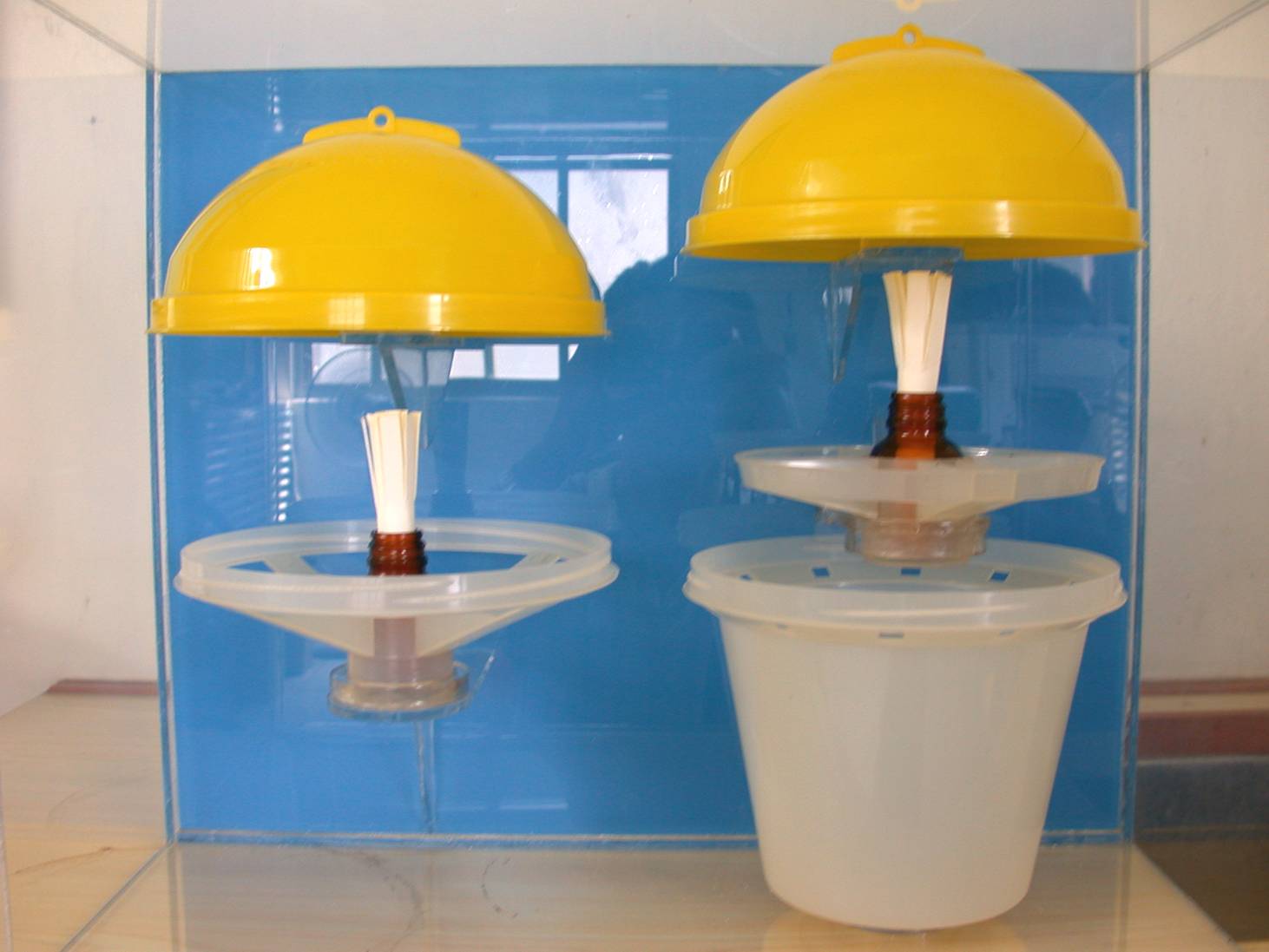
A female oriental fruit fly laying eggs Long-lasting fly trap
in the was apple
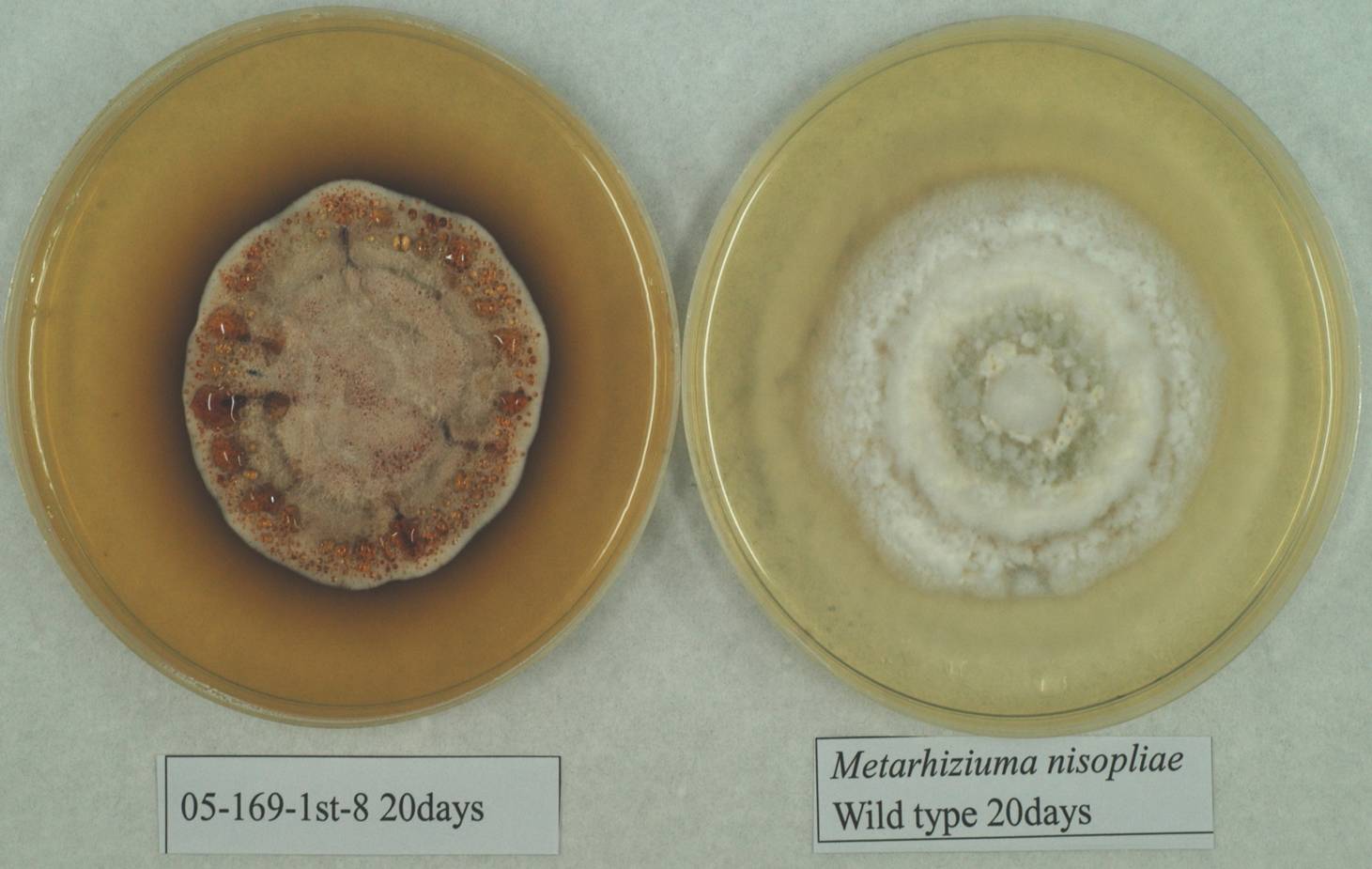
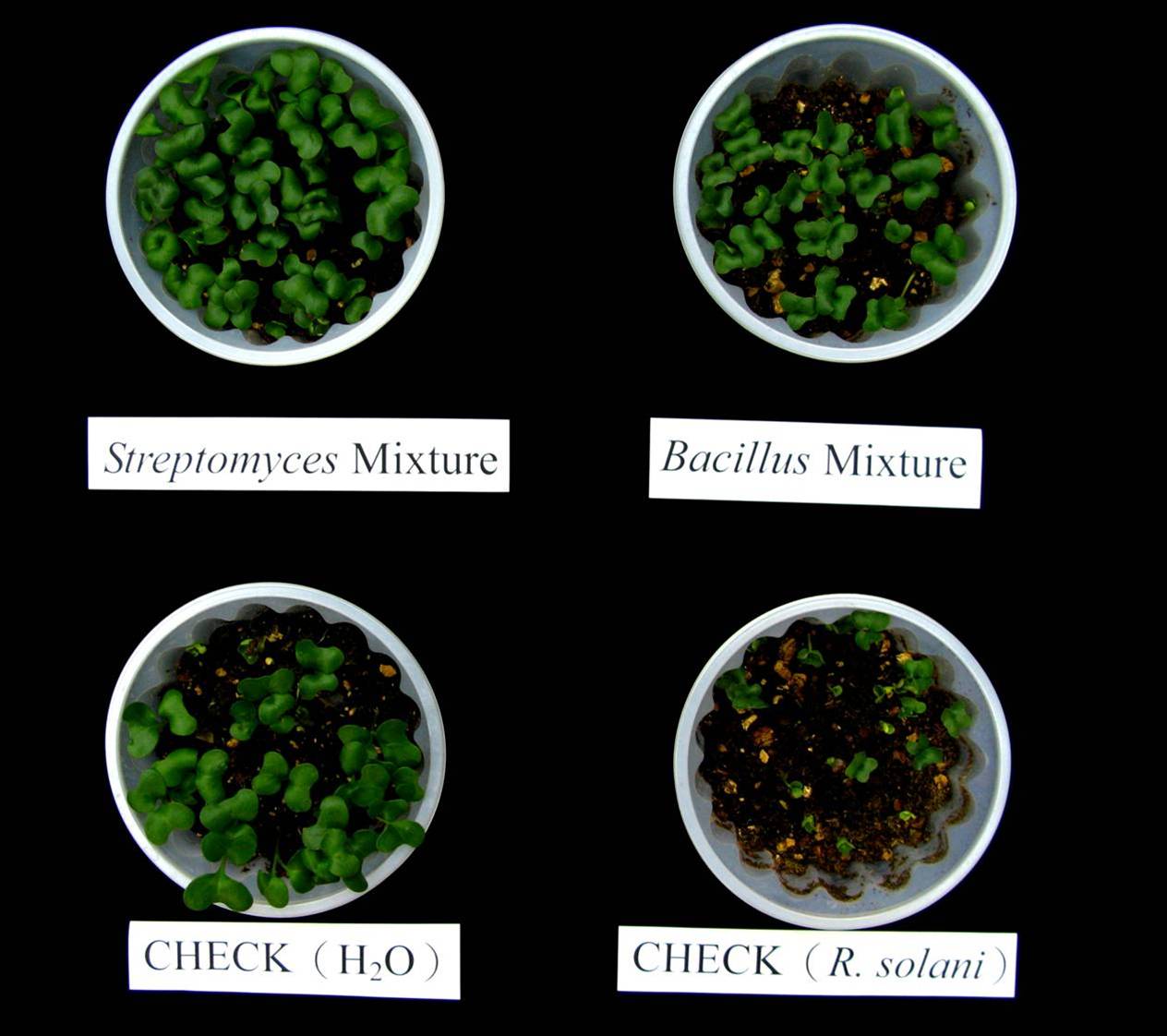
Melanin biosynthesis genes transferred into the Use of the medium containing Streptomyces spp.
entomopathogenic fungus, Beauveria bassiana Reduced the incidence of damping-off
(left: transformant, right: wild type) in vegetable seedlings
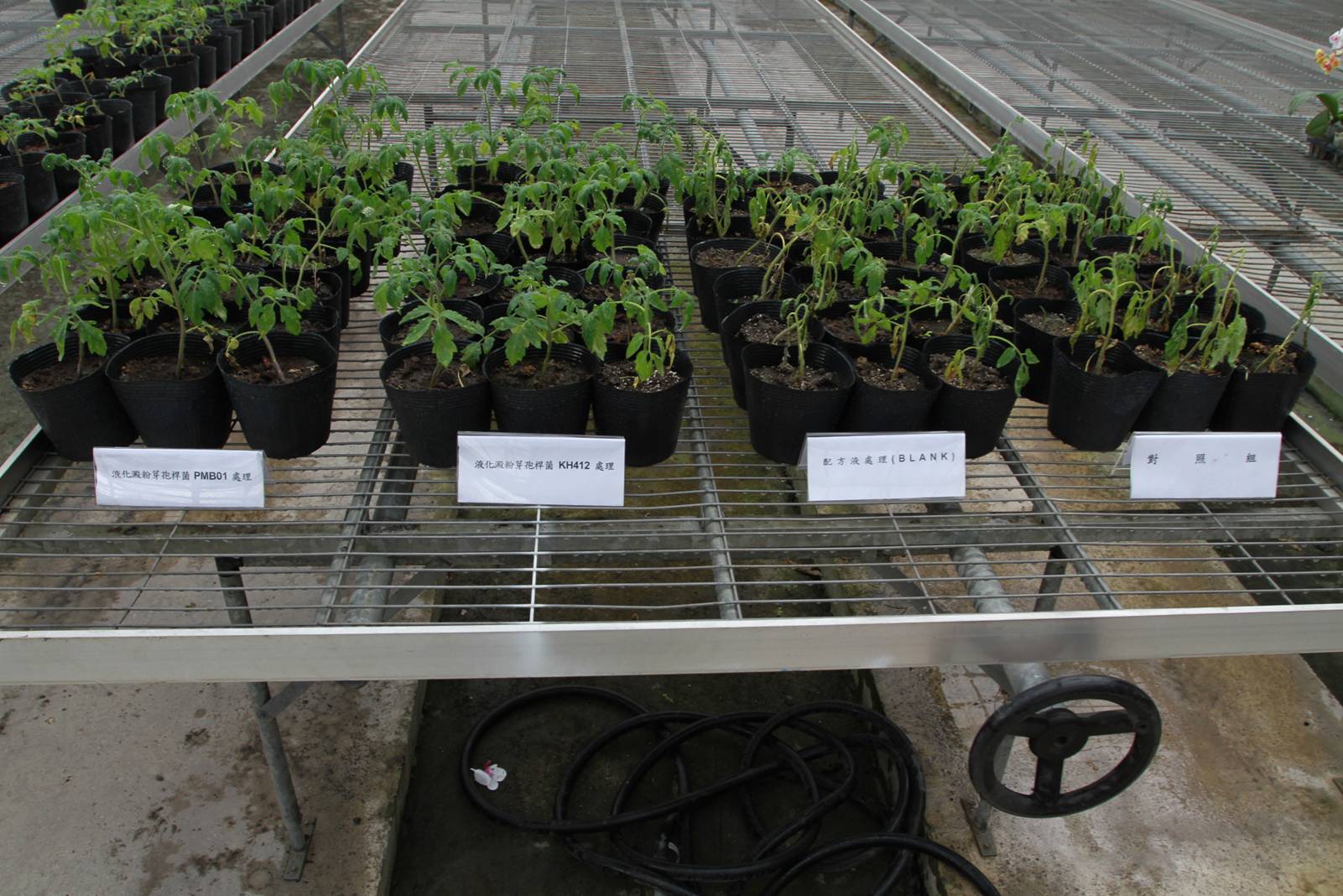

The efficacy of Bacillus amyloliquefaciens The efficacy of Bacillus amyloliquefaciens for
for the control of bacterial wilt of tomato control of bacterial wilt of eggplant in the field.
in the the greenhouse. (left 1-2: treatment (left: control; right: treatment of B. amyloliquefaciens )
of B. amyloliquefaciens ; right 1: control;
right 2: blank)


